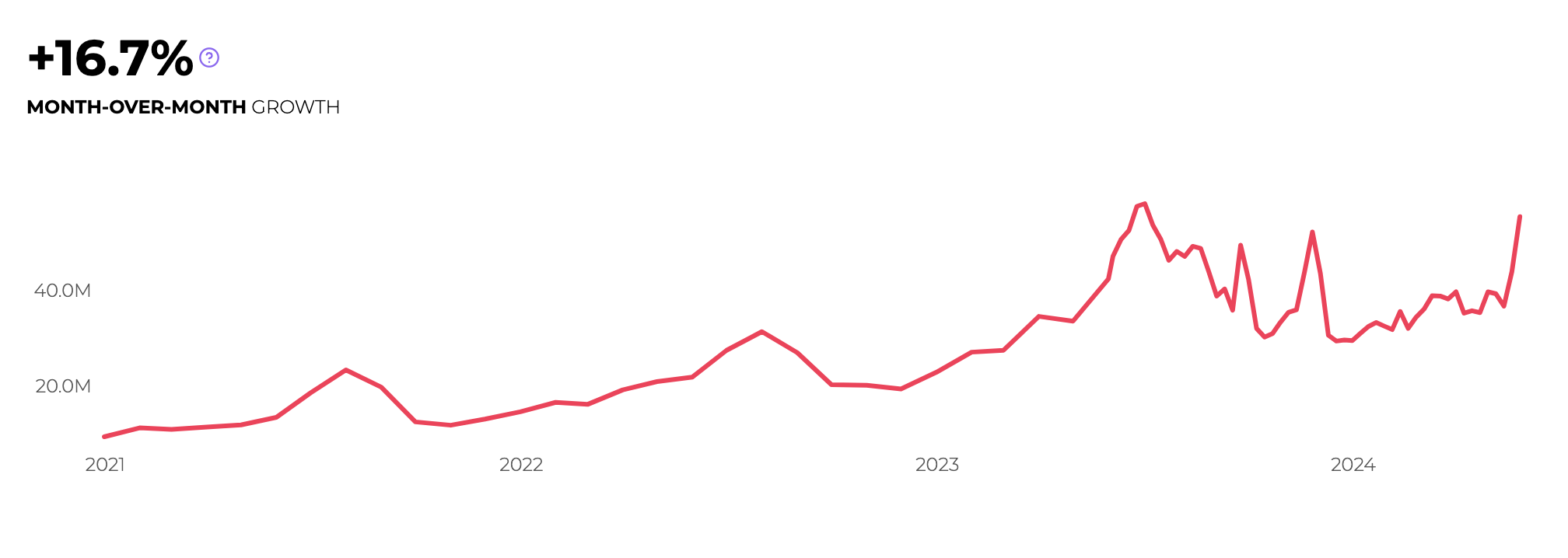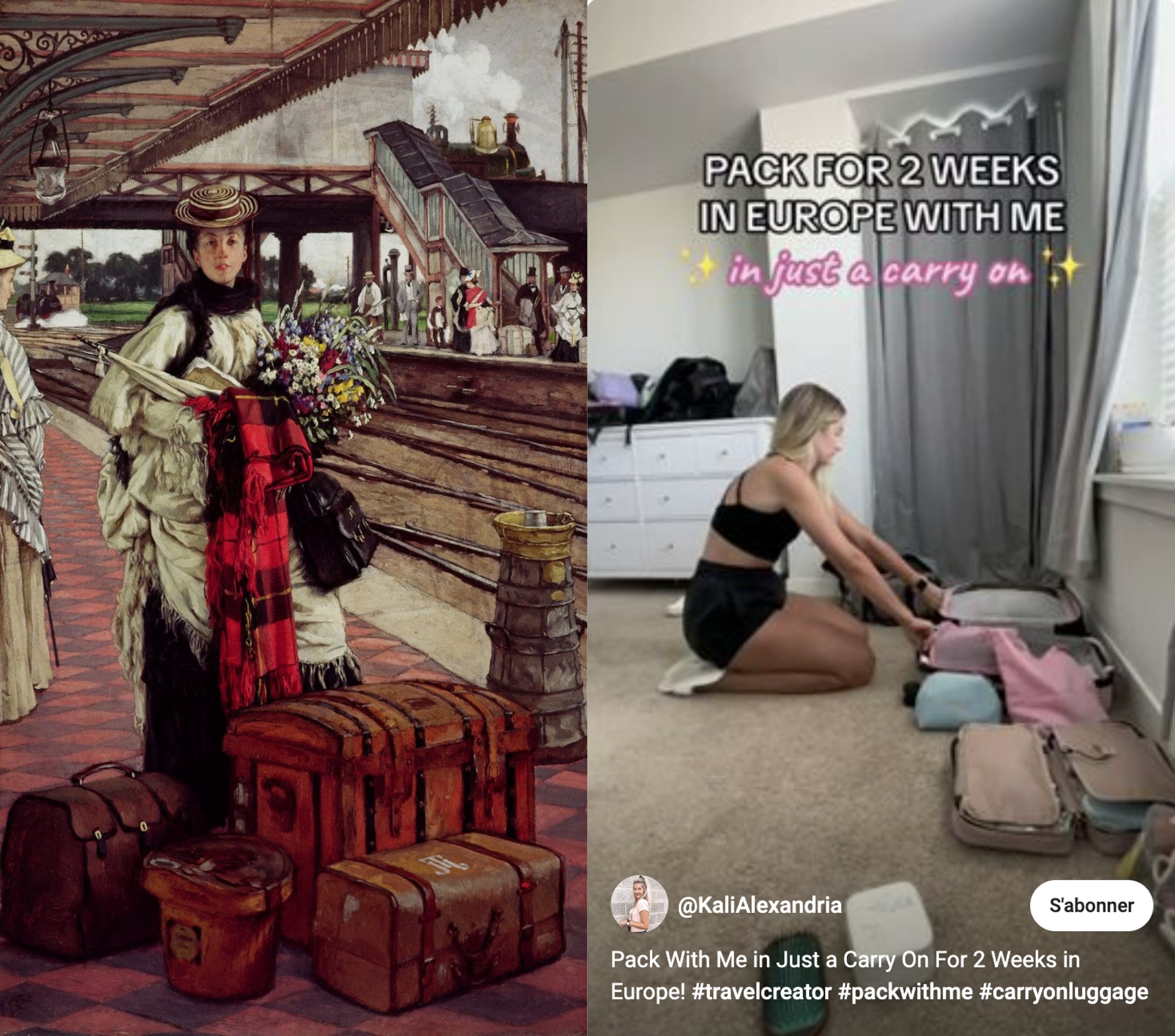The "pack-with-me" (PWM) trend, also known as PackTok, has been trending on social media for the past three years. There are currently 177 million of these videos on TikTok, which feature mostly Gen Z women in the US and Europe packing their suitcases to go on a trip (TikTok).
In the 18th century, packing essentials meant filling 15 trunks with dishes and linens. Today, however, pack-with-me videos highlight the impressive skill of fitting two weeks' worth of outfits, makeup, and accessories into a single carry-on.
A carefully selected wardrobe stuffs color-coordinated pouches. Shampoo and conditioner fill travel-sized containers. Lip oils and serums clunk together as they are delicately placed in the toiletry bag. Soft organizers are zipped up and slid next to each other in the hard case suitcase. The fast-paced editing gives you a mere moment of each item being packed, as essentials are perfectly organized in a concise 15-second video.
There are several compelling aspects to PWM content: the pace, the editing, the organization, the sounds... It mesmerizes because it shows people packing essentials without compromising on style or comfort, all in a very aesthetically pleasing way.
In essence, this trend succeeds because it intersects where minimalism (the desire for quality essentials), small luxuries (the longing for comfort on the go), and satisfaction (achieved through pleasing sounds and coordinated colors) converge harmoniously to create an aesthetically organized outcome.
Remember these key pillars – minimalism, luxury, satisfaction – as they deeply resonate with Gen Z. This makes PWM content especially appealing to this demographic.
The trend gained popularity in summer 2021 (23.5M views on TikTok), gained momentum in summer 2022 (31.5M), and peaked in July 2023 (58.3M). Everything points towards another peak this summer.

This graph shows month-over-month growth, calculated by comparing views this month to last month. As summer approaches, we see a surge, nearing the all-time peak in July 2023 (58.3M views on TikTok). Source: Spate.
The fascination with the art of packing is nothing new. The PWM trend reminds me of how authors described packing in 18th and 19th-century novels. These passages reveal the poetry in a simple task, highlighting its timeless appeal and the enduring fascination it holds.
Take for instance these excerpts:
"The Marquise de Merteuil had meticulously prepared her luggage for her stay in the countryside. She had packed her finest clothes, as well as silverware and crystal glasses for the elegant dinners she planned to host."
Les Liaisons Dangereuses, Pierre Choderlos de Laclos, 1782.
"Emma Bovary had spent the night preparing her luggage for her journey to Rouen. She carefully selected her finest dresses, her most precious jewelry, and took care to pack them neatly in her suitcase, fearing they might wrinkle during the journey."
Madame Bovary, Gustave Flaubert, 1856
These 200 years old satisfying descriptions find their mirror in today’s most associated hashtag with PWM content: #asmr, followed by #satisfying (Spate). I noticed that a similar pattern emerged with the Cleantok trend (where people film themselves cleaning in neatly edited content), which has steadily grown over the past three years before peaking in the past year. Once again, the same two associated hashtags dominate. What do these two trends have in common? They turn mundane, dreaded tasks into satisfying, soothing moments.
Back in the 18th century, people relocated to a place for months. The more trunks you could pack, the richer you were. It meant you had a carriage at your disposal to move all this around, and people to cater to your heavy belongings. Imagine Marie Antoinette’s ladies making a pack-with-me video? “Pack with me as I go to my estate in Normandy for 6 months.” Following a suite of aesthetically pleasing shots of delicate china placed in dedicated trunks, beautiful gowns and shoes carefully wrapped away… but is overpacking still a flex? Or are we more compelled by the intricate work that goes into curating the perfect capsule wardrobe?
Indeed, while the main packing skill back in the 18th century was being able to bring your whole home with you, today’s most revered ability is to curate the perfect collection of essentials, versatile and stylish, in a tiny bag. It suggests that these influencers’ lives are as organized as their packing skills, and people envy that efficiency, and want to replicate it. This is evidenced by the rise of the "that girl" trend: an online persona who prioritizes taking care of her body and mind in an aesthetically pleasing way.
So I couldn’t help but wonder: by creating the perfectly packed carry-on, are we just trying to replicate the same desire ladies had back in the 18th century? The desire to wear your identity and personal style wherever you go?
If I tell you that the PWM trend works because it taps into luxury, would you believe me?
The question becomes: “what does luxury mean to Gen Z?” For a recent brand pitch I worked on, I found myself asking 30 Gen Z people what puts them in a good mood. All of them answered with things like “making my morning matcha brings me calm,” “napping when it rains relaxes me,” “taking my everything shower makes me feel brand new.” All these answers have one thing in common: they attest to Gen Z finding comfort in romanticizing small moments. By elevating a banal situation, they turn a simple cup of coffee into a small luxury. Added one after the other, these small luxuries become a vibe. It strengthens their identity, makes them part of a cultural moment, and it gives them agency over their daily lives, regardless of budget.
Up until social media and the rise of lifestyle trends (such as GRWM, Restocking, Meal Prep, That Girl, Cleantok), routines were a drag to many. Today, getting up, working out, grocery shopping, and cleaning are all things that became excuses for online content. On TikTok, but also in Shorts, Reels, and Pins, the more you’re able to depict these banal tasks in an aesthetic, almost cinematic way, the greater the fascination. And not a single Rimowa suitcase in sight.
Romanticizing is the one key ingredient to all these trends, and the key to the hearts of Gen Z. Give them a product or a narrative that will add glimmers to their daily lives, and you’ll win.
Harnessing the power of a long-standing trend to launch a product is a sure way to enter the US market and intrigue younger audiences. Take the foldable duffle bag, for example.
For many years, the hard-shell suitcase has dominated as the choice of carry-on. Yet a duffle bag entered the industry and has gained huge popularity practically overnight.
It’s easy to see why: the content is satisfying, aesthetically pleasing, and practical. That’s why this product is winning right now on TikTok.
Product developers understood the assignment: the foldable duffle bag answers a need for minimalism and small luxuries, which are both essential to Gen Z right now. It was made for the perfectly curated wardrobe.
So if you’ve ever wondered: ‘How did we go from this to that?’ now you know.

Left: James Tissot Waiting at the Station, Willesden Junction 1874. Right: @KaliAlexandria on TikTok.